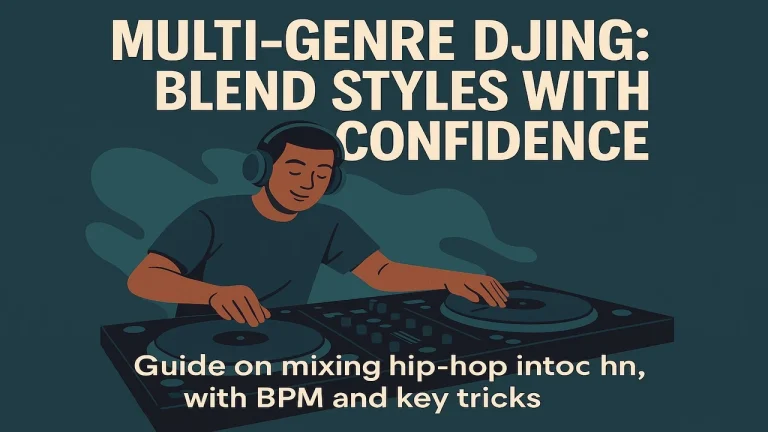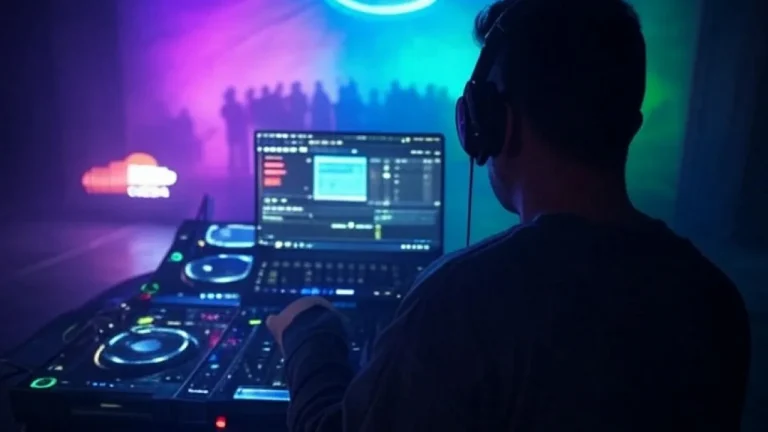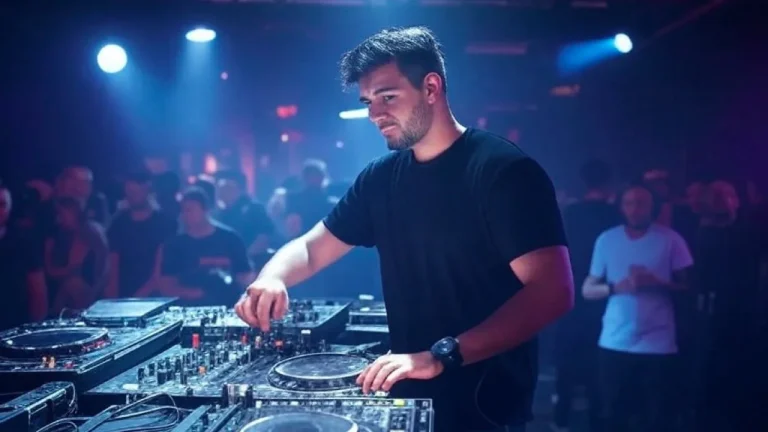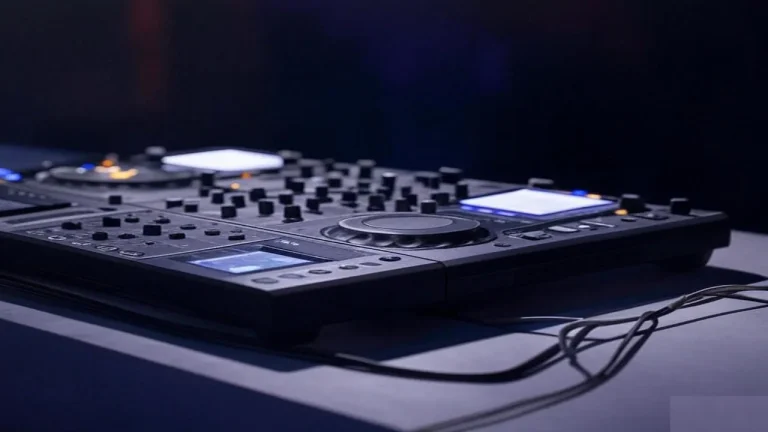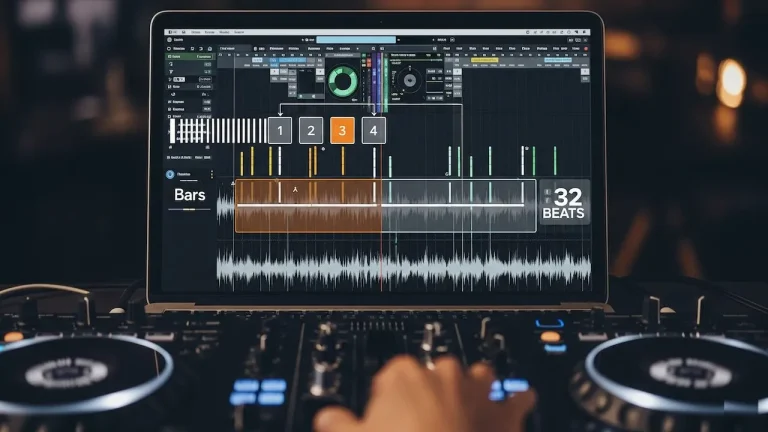Intermediate EQ techniques involve surgical frequency cuts, selective boosts, and dynamic filtering that go beyond basic three-band adjustments to create professional-quality mixes with precise frequency control. These methods allow DJs to shape sound character, fix problematic frequencies, and achieve seamless track blending that elevates performances above amateur level.
While basic EQ skills focus on simple bass cuts and high frequency adjustments, intermediate techniques require understanding frequency ranges, Q values, and the interaction between different elements in a mix. This knowledge becomes the foundation for advanced DJing that separates skilled performers from beginners.
Understanding Frequency Ranges for Intermediate EQ Techniques
Each frequency range serves specific musical purposes and requires different treatment approaches. Low EQ affects basslines and kick drums, high EQ controls hi-hats and cymbals, while midrange EQ shapes guitars, vocals, and lead synths.
Sub-bass frequencies below 60Hz provide weight and power but can muddy mixes when excessive. Bass frequencies from 60-250Hz contain the fundamental tones of most instruments. Low-mids from 250-500Hz often create muddiness when overlapping between tracks.
Mid frequencies from 500Hz-2kHz contain the presence and clarity of most musical elements. Adjustments in the 500Hz to 1kHz range help bring out vocal presence, while cutting this range in supporting elements creates room for leads.
| Frequency Range | Musical Content | Common EQ Application |
|---|---|---|
| 20-60Hz | Sub-bass, kick fundamentals | High-pass filtering, bass management |
| 60-250Hz | Bass guitars, low synths | Warmth adjustment, clarity cuts |
| 250-500Hz | Low-mids, guitar body | Mud removal, separation |
| 500Hz-2kHz | Vocal presence, snare attack | Clarity boosts, nasal cuts |
| 2-8kHz | Vocal consonants, cymbal attack | Brightness, harshness control |
| 8-20kHz | Air, shimmer, cymbals | Sparkle, digital harshness |
Surgical EQ Cuts for Problem Frequencies
Identifying Problematic Frequencies
Surgical cuts target specific narrow frequency bands that cause issues without affecting surrounding frequencies. This technique involves boosting a narrow band and sweeping around until you find nasty sounds or sudden volume increases.
Common problem frequencies include resonant peaks around 300-400Hz that create boominess, harsh frequencies around 2-3kHz that cause listener fatigue, and digital artifacts in the 8-12kHz range from poor encoding.
When you identify a problem frequency, use a narrow Q setting to cut only that specific range. Start with small cuts of 2-3dB and increase gradually until the issue disappears without removing the musical character.
Room Resonance Removal
Room resonances create unnatural frequency buildups that vary between venues. These resonances appear as peaks where certain frequencies sound much louder than others, creating an unbalanced listening experience.
Use real-time spectrum analyzers to identify resonant frequencies, then apply narrow cuts to reduce their impact. Different venues require different treatments, so develop skills in quick frequency identification during setup.
Strategic Frequency Boosting Techniques
Wide Boost Principles
Effective frequency boosts use wide Q settings to enhance musical content naturally. Positive gain values increase signal levels at specified frequencies, but wide boosts sound more musical than narrow ones.
Apply gentle 2-4dB boosts across wider frequency ranges rather than aggressive narrow boosts that create unnatural peaks. This approach enhances the overall character of tracks without creating obvious artifacts.
Presence Enhancement
Presence boosts in the 2-5kHz range bring vocals and lead instruments forward in the mix. This technique helps important elements cut through dense arrangements without increasing overall volume.
Use moderate boosts combined with complementary cuts in competing tracks. For example, boost presence in the incoming track while cutting the same frequencies in the outgoing track for smooth transitions.
Advanced Filtering Techniques for DJs
High-Pass and Low-Pass Filter Applications
Advanced filtering goes beyond simple bass cuts to create dynamic effects and solve mix problems. High-pass filters at 8kHz let highs pass through while cutting lows, and low-pass filters at 60Hz reveal sub-bass content.
Use high-pass filters to create build-up effects by gradually removing bass content before drops. Low-pass filters create the opposite effect, removing brightness to create tension before revealing full-frequency content.
Sweep Filtering for Creative Effects
Sweep filtering involves moving filter cutoff frequencies during playback to create dynamic effects. This technique works particularly well during breakdowns, build-ups, and transitions between different energy levels.
Practice smooth filter movements that follow musical phrases rather than arbitrary timing. Coordinate filter sweeps with other mix elements such as volume fades and crossfader movements for professional results.
Intermediate EQ Techniques for Smooth Transitions
Frequency Slot Management
Frequency slot management prevents conflicting elements from competing for the same frequency space. Rather than boosting bass frequencies directly, turn down mid and high frequencies to bring bass volume up relatively.
When mixing two tracks, identify which frequencies are most important in each song. Cut those frequencies in the less important track to create space for the more important elements to shine through clearly.
Complementary EQ Mixing
Complementary EQ involves making opposite adjustments in different tracks to create better blend. If you boost 2kHz in track A, cut 2kHz in track B to prevent frequency buildup and maintain clarity.
This technique works especially well during long transitions where both tracks play simultaneously. Plan your EQ moves so that the combined frequency response remains balanced throughout the transition.
| Track A Adjustment | Track B Adjustment | Result |
|---|---|---|
| Boost 80-120Hz | Cut 80-120Hz | Clean bass transfer |
| Cut 2-4kHz | Boost 2-4kHz | Vocal presence shift |
| Boost 8-12kHz | Cut 8-12kHz | Brightness transition |
| Cut 300-500Hz | Maintain 300-500Hz | Mud prevention |
Dynamic EQ Applications in Live DJ Sets
Tempo-Based EQ Adjustments
Different tempos require different EQ approaches to maintain consistent energy levels. Slower tracks often need more bass emphasis to maintain groove, while faster tracks may require bass reduction to prevent muddiness.
When moving from 128 BPM house to 140 BPM techno, gradually reduce low-mid frequencies to compensate for the increased rhythmic density. This prevents the mix from becoming cluttered during tempo transitions.
Genre-Specific EQ Strategies
Each musical genre has characteristic frequency distributions that require specific EQ treatment. Hip-hop tracks often have powerful sub-bass that needs space, while rock music requires careful mid-frequency management for guitar clarity.
Develop EQ presets for different genres in your DJ software, but always fine-tune based on specific tracks. No two songs are identical, even within the same genre, so maintain flexibility in your approach.
Using EQ to Fix Track Deficiencies
Vintage Track Enhancement
Older recordings often lack high-frequency content due to technical limitations of their era. Boost high frequencies on vinyl or vinyl rips where the medium itself is limited in higher frequency information.
Apply gentle high-frequency shelving boosts starting around 8-10kHz to add air and presence to dull recordings. Be careful not to boost digital artifacts or surface noise along with the musical content.
Overcompressed Track Treatment
Modern tracks often suffer from excessive compression that reduces dynamic range and creates fatigue. Use multiband EQ to restore some life to overly compressed material.
Gentle mid-frequency cuts can reduce the aggressive character of overcompressed tracks, while subtle high-frequency rolls can tame harshness without losing clarity.
Advanced EQ Hardware and Software Tools
Parametric EQ Controllers
Hardware controllers with parametric EQ sections provide precise frequency control during live performance. These units offer adjustable frequency, Q, and gain controls for each band.
Popular parametric EQ controllers include the Allen & Heath Xone series, Pioneer DJM mixers with isolator modes, and dedicated outboard EQ units such as the Rane MLM 102 or Ecler NUO series.
Learn to use these controls intuitively so you can make precise adjustments without taking your eyes off the crowd. Muscle memory development is key for effective live EQ performance.
Software EQ Plugins for DJs
Modern DJ software includes sophisticated EQ tools that rival professional studio plugins. Traktor Pro 3, Serato DJ Pro, and VirtualDJ all offer parametric EQ options beyond basic three-band controls.
Explore the advanced EQ modes in your DJ software and create custom mappings for hardware controllers. Many controllers allow you to map knobs to specific frequency bands for more precise control than standard EQ sections provide.
Developing Your EQ Listening Skills
Critical Listening Exercises
Developing advanced EQ skills requires training your ears to identify specific frequencies quickly and accurately. Practice with frequency training software and reference tracks you know well.
Use apps such as Quiztones or SoundGym to develop frequency identification skills. Practice identifying specific frequencies, Q widths, and the difference between cuts and boosts at various levels.
Reference Track Analysis
Analyze professionally mixed tracks to understand how different frequency balances create different moods and energy levels. Use spectrum analyzers to visualize frequency content while training your ears.
Compare tracks from different eras, genres, and production styles to understand how EQ choices affect the overall sound character. This knowledge helps you make better EQ decisions during live performance.
Common Intermediate EQ Mistakes to Avoid
Over-EQing Syndrome
Excessive EQ adjustments can destroy the original character of well-produced tracks. Start with minimal adjustments and increase only when necessary for specific mixing goals.
Most professional tracks are already well-balanced and require only subtle EQ adjustments for mixing purposes. Major EQ changes should only be used to solve specific problems or create intentional effects.
Ignoring Phase Relationships
EQ adjustments can affect phase relationships between tracks, especially in the low frequencies. Phase cancellation can cause bass frequencies to disappear when two tracks are played together.
Monitor your mix in mono periodically to check for phase issues. If bass disappears in mono, adjust the EQ or timing of one track to restore low-frequency content.
People Also Ask
Cut overlapping frequencies in the less important track, typically 80-120Hz for bass conflicts and 2-4kHz for vocal presence. This creates space for the more important elements to shine through clearly.
Avoid boosts exceeding 6dB during live performance, with most effective boosts staying between 2-4dB. Excessive boosts create unnatural peaks and can cause distortion or feedback.
Use narrow Q for cutting problem frequencies and wide Q for musical boosts. This approach maintains natural sound character while solving specific issues.
Complementary EQ works best, where you boost frequencies in the incoming track while cutting the same frequencies in the outgoing track. This prevents frequency buildup and maintains mix balance.
Frequently Asked Questions
Use the boost and sweep technique by applying a narrow boost and moving it across the frequency spectrum until harsh or unpleasant sounds become obvious. Then cut that frequency range to solve the problem.
Yes, many intermediate techniques work with standard three-band EQ, though parametric EQ provides more precision. Focus on frequency slot management and complementary cuts with basic equipment.
Boost 2-5kHz for vocal presence and cut 300-500Hz to reduce muddiness. Use high-pass filtering below 80Hz to remove unnecessary low-frequency content from vocal tracks.
Cut frequencies between 250-500Hz to clear mud while maintaining bass weight in the 60-120Hz range. Use high-pass filtering to remove sub-bass content that adds weight without musical value.
Use EQ strategically for transitions, problem-solving, and creative effects rather than constantly adjusting. Most well-produced tracks need minimal EQ for successful mixing.
Yes, EQ forms the foundation for most other intermediate techniques including harmonic mixing and creative transitions. Master basic EQ fundamentals before advancing to these techniques.


